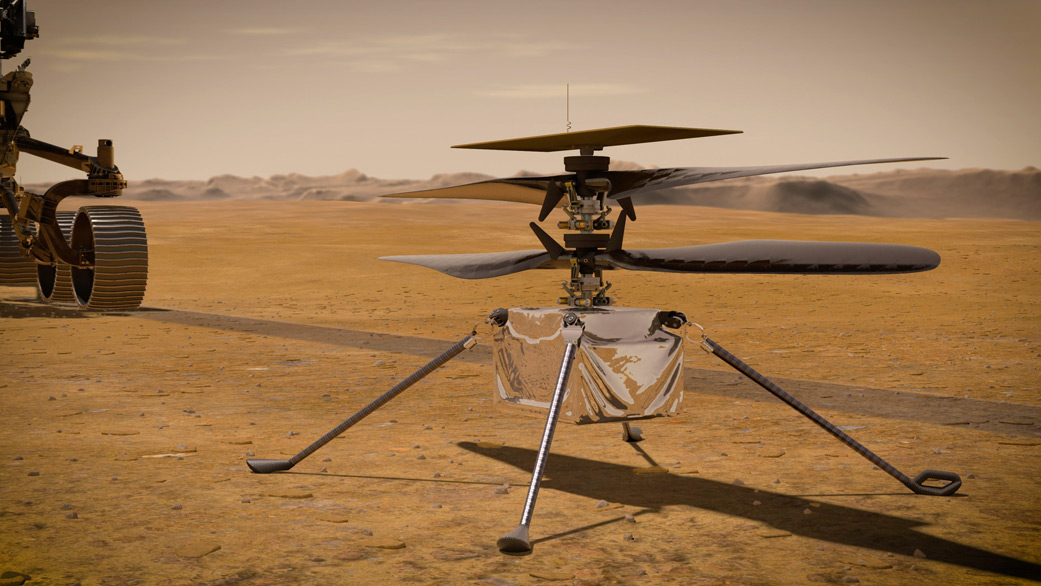
NASA's Mars Helicopter Powers Up in Space
NASA’s Perseverance rover is on its way to the red planet following a successful launch and a small glitch with the rover’s software. The new explorer robot has a lot in common with Curiosity but adds more cameras, stronger wheels, and its very own helicopter. NASA has now confirmed that the helicopter, known as Ingenuity, is still in good shape following the launch. Once Perseverance reaches Mars, NASA JPL hopes to make Ingenuity the first flying robot on another planet. First, it has to get there with all systems operational. Starting on August 7, NASA powered up the helicopter, which is currently mounted to the underside of the car-sized rover. Ingenuity successfully pulled power from the rover’s systems to charge its batteries, allowing NASA to verify its electronics were working correctly. It took about eight hours to charge the batteries, but NASA only filled them to 35 percent. That was enough to run diagnostics on the helicopter without negatively impacting the longevity of the cells. After all, no one is going to be nearby to swap them out, and NASA would probably prefer to have a working helicopter on Mars for as long as possible even if it’s not essential to the mission. Ingenuity is could be helpful to Perseverance, but the team is more interested in learning how a helicopter drone behaves on Mars. The drone will be able to lift off, capture photos of the terrain, and then set down. After each flight, it will communicate wirelessly with Perseverance to transmit its data. It won’t need to reconnect to Perseverance to recharge on Mars — that’s just for testing the systems during the trip. On the planet, Ingenuity will use its small solar panel array to refill the battery. NASA has done its homework to give Ingenuity the best possible chance of success. It weighs just 1.8 kilograms (about 4 pounds on Earth) and the 3.9-foot (1.2-meter) rotor should provide enough lift based on ground testing. Mars has a thinner atmosphere with lower gravity. The team estimates Ingenuity will be able to reach about 10 meters high and cover 300 meters per flight. It has autonomous capabilities, but the first few flights will be carefully scripted by controllers at NASA JPL. This is still just a technology demonstration as far as NASA is concerned. Even if Ingenuity falls out of the sky, the Perseverance mission will continue normally. However, a successful trial for Ingenuity could lead to missions that explore the planet entirely from the air. As we know from numerous robotic missions, driving across the Martian surface is difficult and damaging for rovers.Now read:
……Read full article on Extreme Tech
Technology Space
Comments
Leave a comment in Nestia App